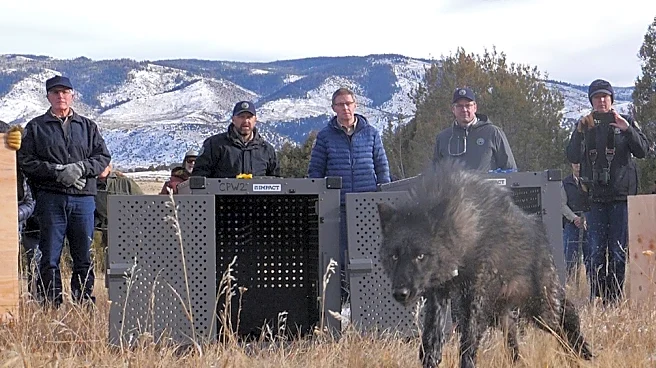What's Happening?
The Carcross/Tagish First Nation (C/TFN) in Yukon recently celebrated two decades of self-governance, marking a significant milestone since the signing of their self-governance agreement on October 22,
2005. This agreement, reached after extensive negotiations with federal and territorial governments, grants the First Nation jurisdiction over its land and citizens, allowing it to legislate and manage areas such as taxes and education. Chief Maria Benoit highlighted that while the First Nation has made progress, there is still much work to be done, particularly in areas like housing development, economic growth, and land claim negotiations in northern British Columbia. The First Nation continues to implement parts of the agreement, focusing on building infrastructure and programs that reflect their cultural and governance values.
Why It's Important?
The self-governance of the Carcross/Tagish First Nation represents a broader movement towards Indigenous autonomy and self-determination in Canada. This milestone underscores the importance of Indigenous communities having control over their affairs, which can lead to more culturally relevant and effective governance. The progress made by C/TFN can serve as a model for other Indigenous groups seeking similar agreements. The ability to manage their resources and affairs allows for tailored economic and social development, potentially leading to improved living standards and cultural preservation. However, the ongoing challenges highlight the complexities involved in transitioning from federal oversight to self-governance, requiring sustained effort and resources.
What's Next?
The Carcross/Tagish First Nation plans to continue its development efforts, focusing on housing, economic programs, and land negotiations. As these initiatives progress, the First Nation will likely seek further collaboration with government entities and other stakeholders to support their goals. The long-term vision includes building a governance system that avoids replicating colonial structures, which requires innovative approaches and community involvement. The success of these efforts could influence policy and inspire other Indigenous communities to pursue self-governance agreements.
Beyond the Headlines
The journey of the Carcross/Tagish First Nation towards self-governance highlights the broader cultural and ethical dimensions of Indigenous autonomy. It reflects a shift towards recognizing and rectifying historical injustices faced by Indigenous peoples. The ongoing development efforts are not just about economic growth but also about cultural revitalization and the assertion of Indigenous identity. This process involves balancing modern governance needs with traditional values, which can be a complex but rewarding endeavor.













